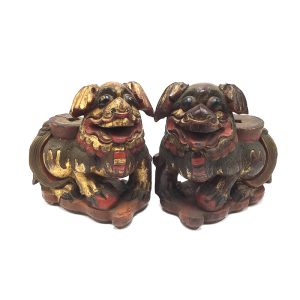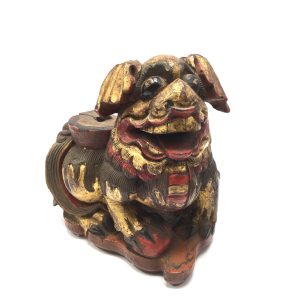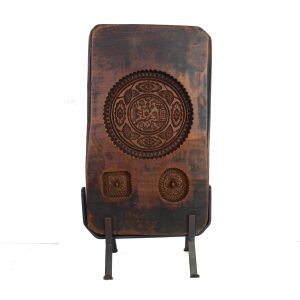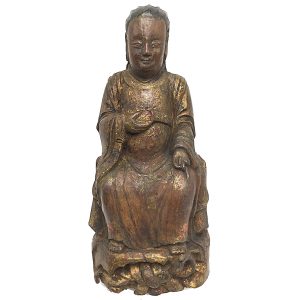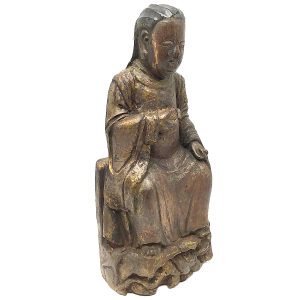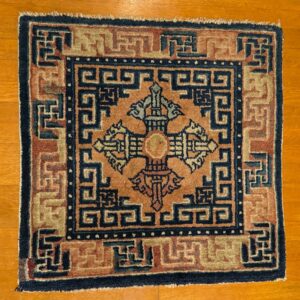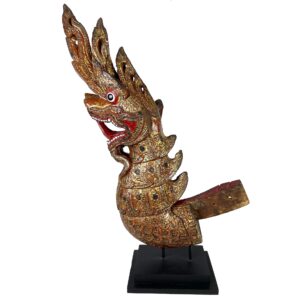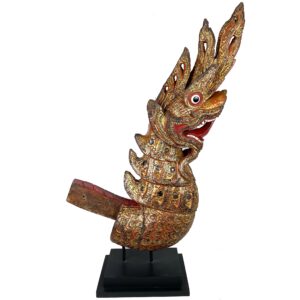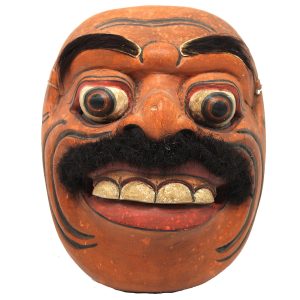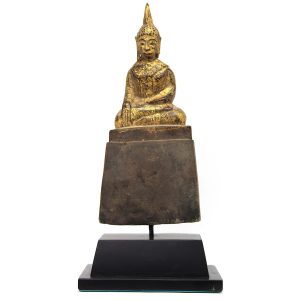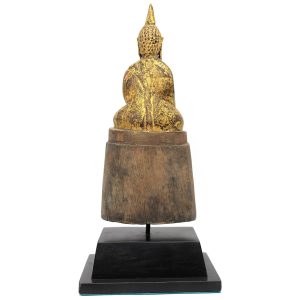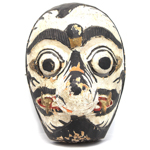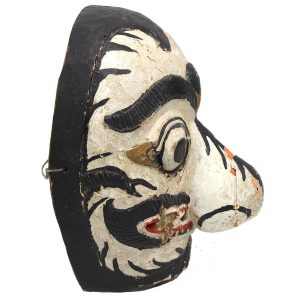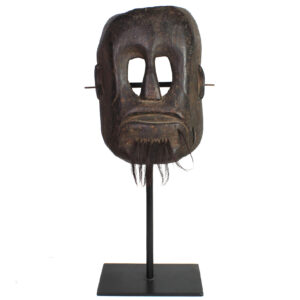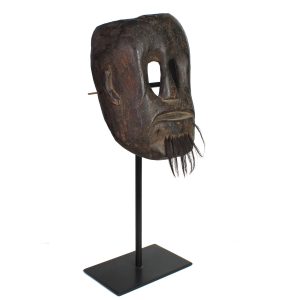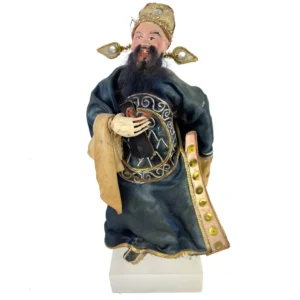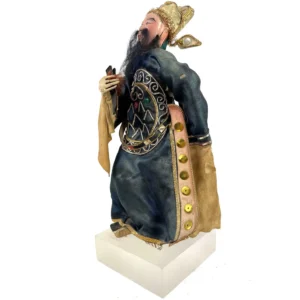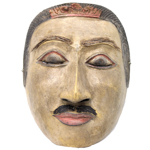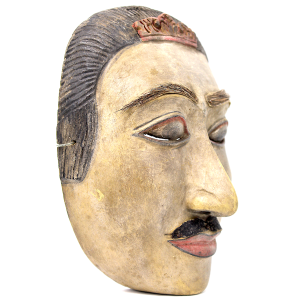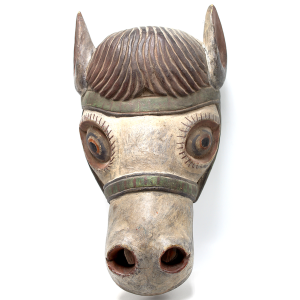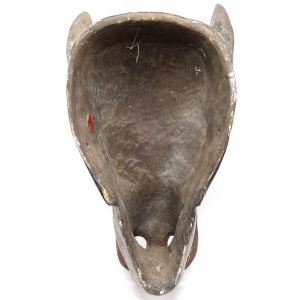Showing 37–48 of 68 results
-


$595.00
Whimsical carvings of fu lions were the most popular mythical animals in Chinese homes, especially during the Ming and Qing dynasties, as free standing statues, designs on furniture, architectural elements and functional pieces in private homes or gardens or on a home altar to bring fu and the blessings to the home. This incredibly cute…
-


$850.00
The Mid Autumn Moon Festival, also called the Mooncake Festival, is the 2nd most important holiday after the Chinese New Year, celebrated when the full moon is at its brightest point on the 15th day of the 8th month of the lunar calendar. It is a time for multi-generational gatherings when families dine together in harmony,…
-
Sale!


$595.00 Original price was: $595.00.$395.00Current price is: $395.00.
H: 12″ W:5.6 ” D:4″ | FREE SHIPPING WITHIN CONTINENTAL U.S.!
Zhenwu, the True Warrior, Perfected Warrior or Northern Emperor was one of the most popular TaoistDeities in the Ming and Qing dynasties known as protector of the state and the imperial family. His feet here rest on a pedestal over a turtle with a lifted head and a snake curled around his shell. Among the many interpretations this represent beings over whom he presided including both celestial officers under his command, [and] former demons that were conquered by him. This is a fascinating carving symbolizes trusted strength. and power.
-
Sale!


$375.00 Original price was: $375.00.$285.00Current price is: $285.00.
25″ Square
This vibrant carpet can be used as aid for meditation to sit on or hung on a wall.
-


$1,133.00
H: 32″ W: 20″ D: 7.5″ SHIPPING INFORMATION REQUIRED. CONTACT US AT 213-568-3030
This exceptional naga was one of two that comprised a gong stand. Gongs were used in Burma for both ceremonial and musical purposes in religious, state, or secular settings. A protection figure, this naga is a superb carving elaborately decorated with gold lacquer and pigmentation. He opens his mouth wide bearing mother-of-pearl teeth and a curled blood red mouth and tongue to drive away malevolent spirits, also reinforced by the large glaring eyes circled in red. On first glance it is menacing, but its history as a protector of Buddha Shakyamuni make it prized as a fanciful, gleeful guardian. His scales are arched relief designs of mixed lacquer and ash and they are highlighted with inset cut mirrors and green sequin-like glass “jewels.” It is mounted on a museum quality stand and is in excellent condition for its age and use despite missing an ear.
-
Sale!


$110.00 Original price was: $110.00.$0.00Current price is: $0.00.
H: 7.625″ W: 6.125″ D: 3.375″ | FREE SHIPPING within continental u.s.
Most jauk keras (strong, scary) masks of a giant are often red or orange to reinforce a volatile dance with jerky movements. This jauk manis (good, sweet) mask dance is a more controlled, regulated and enacted with more calm and human movements.
-


$295.00
H: 9” W: 4.25 D: 3.125” | FREE SHIPPING
This mid 20th century Buddha Shakyamuni in Earth Witnessing position is carved in rural Lao style. Covered with gilt, the small rustic and simply carved image follows Lao artistic canons for depicting a Buddha: a curved hairline and high arched eyebrows that meet at the bridge of the nose, distinct hair curls, long ears, and a flame-shaped radiance emerging from his ushnisha. Its very large base is as tall and wide as the image, reflecting Laotian beliefs that a high pedestal reflects a deep respect for the Buddha. A base has been added for display purposes. Authentic old Lao images, even small personal ones like this, are difficult to find.
-


$165.00
Influenced by Islam for centuries, Javanese theater in Indonesia is stylized, didactic and full of central characters said to be cultural and historic icons of morality. Mask drama theater (Topeng Wayang) in Java is dominated by the conservative central Javanese palace courts (kraton) of Surakarta, Solo and Jogjakarta (Yogyakarta) which have long supported mask makers,…
-
Sale!


$1,750.00 Original price was: $1,750.00.$1,350.00Current price is: $1,350.00.
H: 20.75″ W: 8″ | CALL 213-568-3030 OR EMAIL [email protected] FOR SHIPPING
Rare Timor ancestor mask for ritual offerings to honor the departed and provide space during village visits, repel evil spirits. Featured in 2002 Spiderman movie in collection of the Green Goblin.
-
Sale!


$195.00 Original price was: $195.00.$135.00Current price is: $135.00.
Ht: 8.75″ D: 4″ D: 3.125″ | FREE SHIPPING within Continental U.S.
Colorful bearded official/entertainer doll with traditional hat, dark blue and gold robe holding paper clappers castanets. Mounted on lucite.
-


$105.00
This Dalem is a traditional folk-art and ethnic mask (topeng) from Bali made from pulai wood of a Hindu king (Dalem). He stares directly at the viewer while his high cheeks help express his poise and the ability to remain cool in a crisis. This is a fine example of a gifted carver able to…
-
Sale!


$325.00 Original price was: $325.00.$210.00Current price is: $210.00.
H: 13.5″ W: 7.5″ D: 5″ | FREE SHIPPING WITHIN CONTINENTAL U.S.
Used in ritual Cham Dances, this whimsical and colorful mask emphasizes the horses playful character, alertness and strength with large eyes, painted lashes, wide raised lids, flaring nostrils, open mouth and pointed ears framed by beautifully carved rows of black hair.
End of content
End of content

